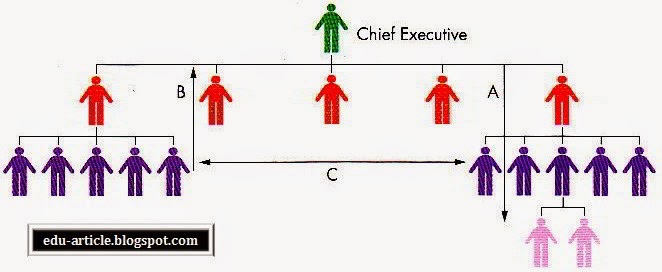Organizational communication is the exchange of information, ideas, and views within and outside the organization. Organizational communication indicates communication not only in business but also in hospitals, churches, government agencies, military organization, and academic institutions.
Every organization whether business or non-business has some specific goals and stakeholders. Attainment of those goals depends on successful communication with the respective stakeholder groups. Therefore, communication is considered as the part and parcel of any organization.

Forms of Organizational Communication
From a broader perspective, organizational communication takes three different forms such as:
- Internal operational communication,
- External operational communication, and
- Personal communication.
These three forms of organizational communication are highlighted below:
Internal Operational Communication
Communication that occurs for carrying out operations of the organization is known as internal operational communication.
Internal members of the organization such as workers, managers, the board of directors, members of trade unions etc. are the participants of internal communication. This type of organizational communication takes the form of oral and written.
Oral communication occurs through face-to-face conversation, telephone, meeting, speech etc.
Written communication is done through orders, instructions, reports, memos, letters etc. In modem time, many organizations provide intranet facility for internal electronic communication.
This enhances the speed and reduces the cost and time length of communication.
Moreover, internal communication occurs in various patterns depending on the flow of information such as horizontal communication and vertical communication.
Horizontal communication occurs when information is exchanged between two people holding the same ranks and positions in the organization hierarchy.
In vertical communication, information flows between superiors and subordinates. Vertical communication is mainly of two types, such as downward communication and upward communication.
Downward communication occurs when superiors send instructions, orders, and advice to the subordinates.
On the other side, when subordinates convey their attitudes, opinions, suggestions etc. to the superiors, it is called upward communication.
External Operational Communication
Communication with the external parties or groups is known as external operational communication.
External parties include customers, suppliers, government agencies, regulatory authority, local community, special interest group and the general public.
Without communicating with these external parties, it is not possible to achieve organizational goals.
Personal Communication
Communication that occurs for exchanging personal information, ideas and feelings rather than business related information are termed as personal communication. Not all communication that occurs in business is personal.
Whenever people come in contact with each other, they engage in personal communication.
Personal communication is a crucial part of organizational communication. Although such form of communication does not deal with operational plans, it influences the attitudes of the employees regarding those operational plans.
Therefore, every organization must recognize personal communication as part of its overall organizational communication.
Organizational communication is a process which involves the transmission and accurate replication of ideas ensured by feedback for the purpose of eliciting actions which will accomplish organizational goals.